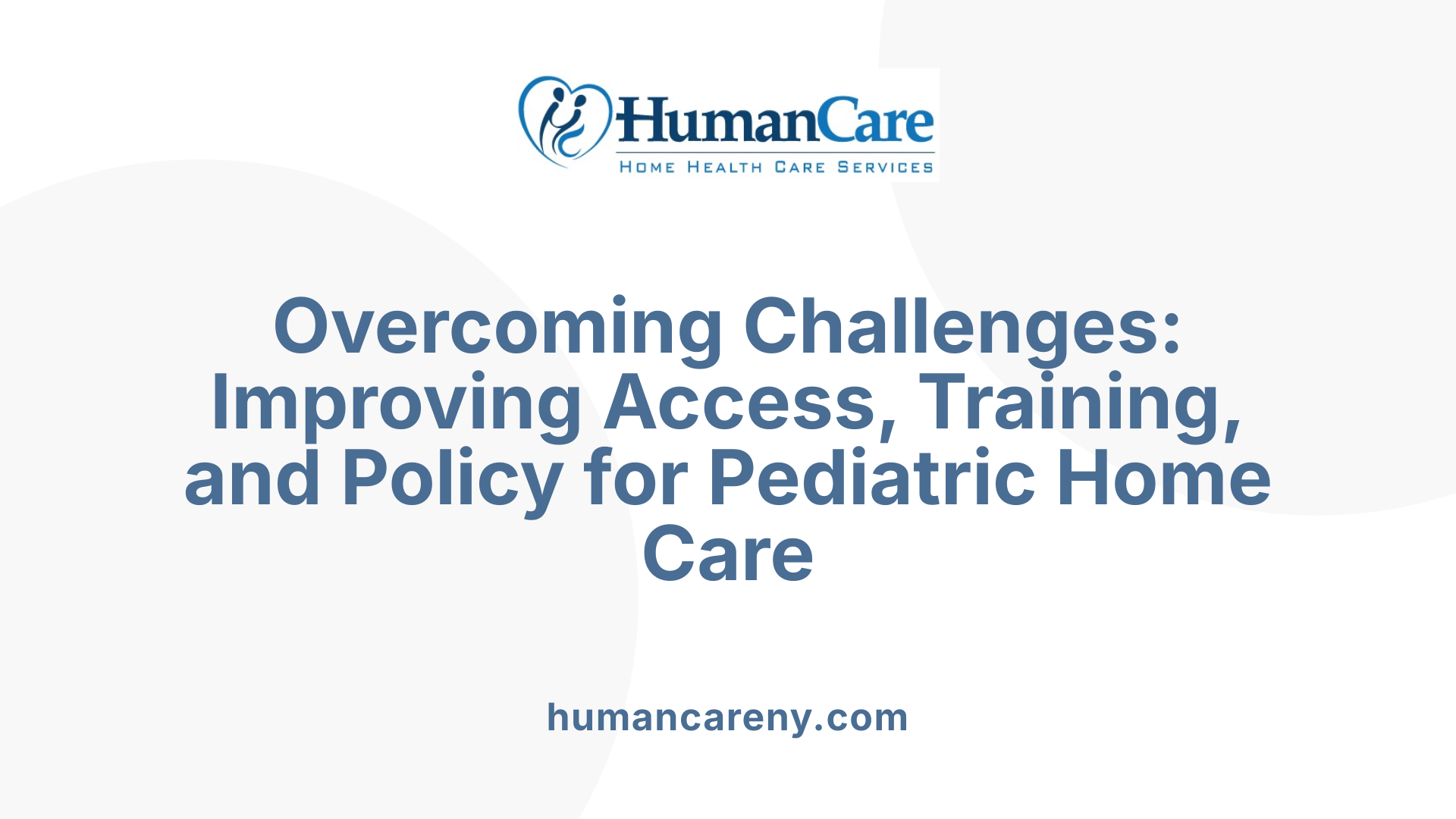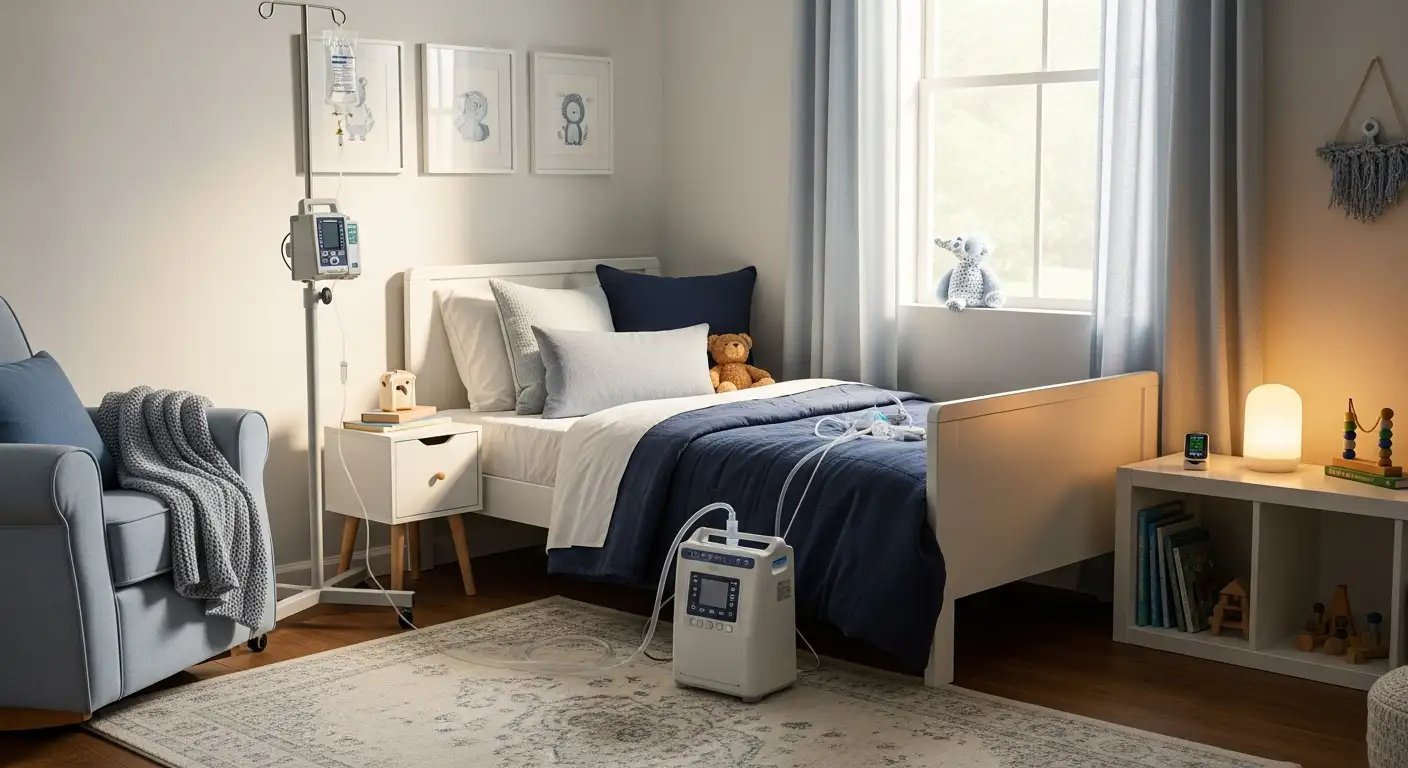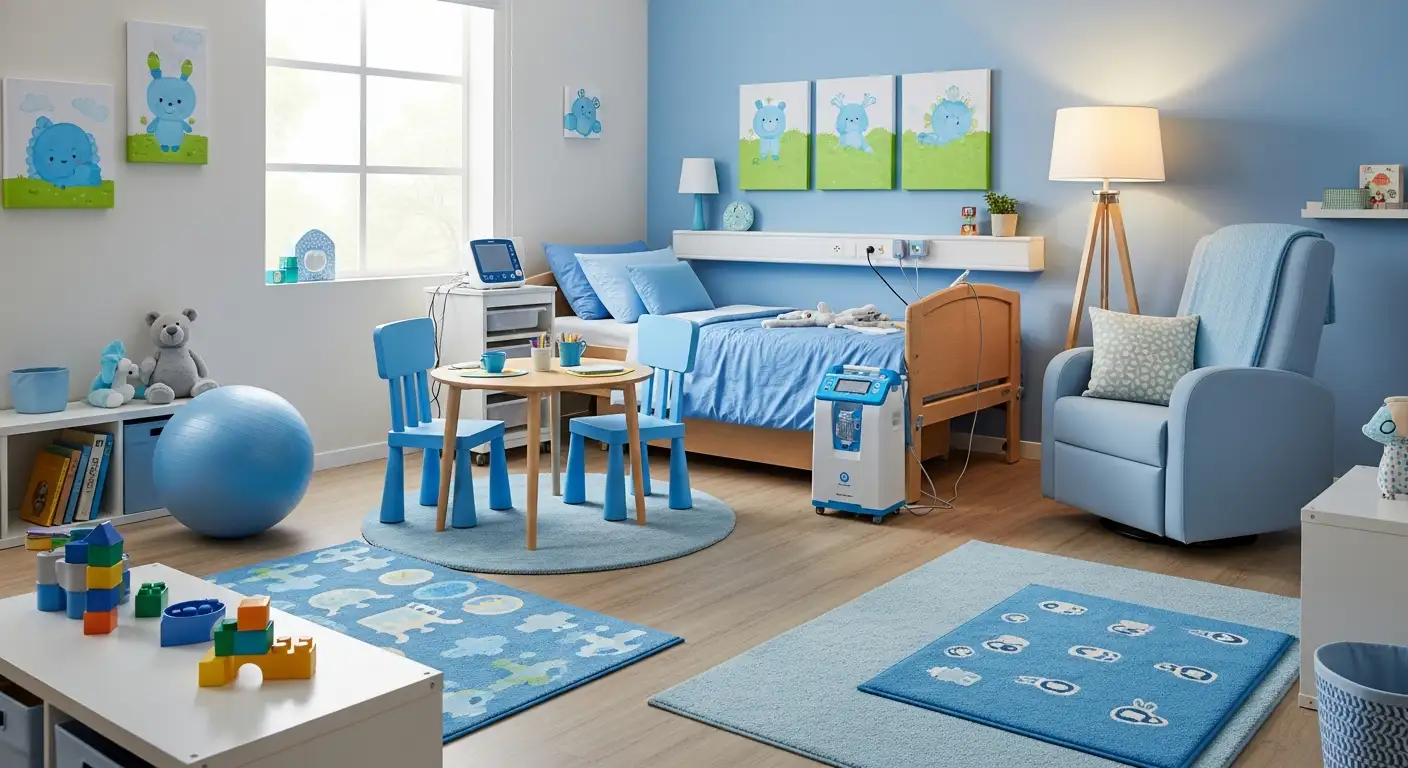How Pediatric Home Care Supports Therapy for Developmental Delays
Transforming Care: The Role of Pediatric Home Services in Promoting Developmental Progress

Understanding Pediatric Home Care and Its Therapeutic Benefits
Pediatric home care has emerged as a vital support system for children with developmental delays, providing comprehensive medical and therapeutic services within the comfort and familiarity of the home. These services not only address physical, speech, and occupational therapy needs but also enhance emotional well-being, foster family involvement, and improve overall treatment outcomes. This article explores how pediatric home care supports therapy for developmental delays by offering personalized, accessible, and holistic care.
The Foundations and Advantages of In-Home Pediatric Care

What Is Pediatric Home Care and What Services Are Included?
In-home pediatric care provides comprehensive medical and therapeutic support directly within the child's home. This care encompasses a wide range of services, including physical therapy, occupational therapy, speech-language pathology, skilled nursing, and behavioral or educational interventions. Such an approach is aimed at promoting the child's physical, emotional, social, and intellectual development in a familiar environment.
What Are the Benefits of Receiving Care at Home?
Delivering care at home offers numerous advantages. Familiar surroundings help reduce the child's anxiety and stress, eliminating many of the challenges associated with clinical or hospital settings. This comfort fosters stronger trust and collaboration between healthcare providers, children, and their families. Additionally, therapies tailored to the child’s daily environment yield more relevant and effective treatment outcomes.
How Does This Environment Affect Emotional and Psychological Well-Being?
Being cared for in a predictable and known environment supports a child’s emotional and psychological health by minimizing disruptions and feelings of insecurity. It encourages stronger parent-child bonds, as families actively participate in the care process, which benefits both emotional support and social development.
How Does It Help Reduce Stress and Build Trust?
Children experience less distress when interventions occur at home, contributing to improved cooperation and engagement with healthcare professionals. This increased trust facilitates early detection of health or developmental concerns and enables timely interventions, ultimately leading to better treatment outcomes.
In summary, pediatric home care is a patient-centered model that integrates medical and therapeutic services in a comforting environment, reducing stress and empowering families while effectively supporting the child's overall development.
Customized Therapeutic Interventions in the Home Setting

Physical Therapy Tailored to the Home Environment
Physical therapy (PT) delivered at home allows therapists to design exercises and interventions aligned specifically with the child's daily living space and routines. This custom approach promotes the practical use of motor skills and enhances independence by adapting strategies to real-life contexts rather than clinical simulations.
Occupational Therapy Strategies for Motor Skills Development
Occupational therapy (OT) in a home setting focuses on helping children develop fine and gross motor skills within familiar surroundings. Therapists can use household items and environments to address functional goals, enabling children to master skills important for daily activities such as dressing, feeding, and playing.
Speech-Language Therapy Benefits When Delivered at Home
Providing speech-language therapy (SLP) at home offers a relaxed atmosphere that reduces anxiety and facilitates communication skill development. Children tend to be more comfortable and responsive in familiar surroundings, helping therapists address speech and language challenges more effectively.
Enhanced Comfort Leading to Better Therapy Engagement
Therapy at home minimizes stress and disruptions caused by traveling or unfamiliar clinical settings. This increased comfort leads to higher levels of engagement and cooperation from children, making therapeutic interventions more successful.
Role of Multidisciplinary Collaboration
In-home therapy fosters collaboration among physical therapists, occupational therapists, and speech-language pathologists. This coordination ensures comprehensive care plans address multiple developmental areas cohesively, improving overall outcomes for the child.
Early Detection and Continuous Monitoring Through Pediatric Home Care

Importance of Early Detection of Developmental Delays
Detecting developmental delays early is crucial to improving treatment outcomes for children receiving pediatric home care. In-home services create a nurturing environment where subtle signs of developmental challenges are more likely to be noticed promptly by healthcare providers familiar with the child's daily behavior.
Role of Ongoing Assessments and Observations in Home Care
Continuous monitoring through regular check-ups and observations conducted in the child's home enables healthcare professionals to track progress and adjust care plans accordingly. This ongoing assessment helps in identifying emerging issues quickly, preventing complications and supporting steady development.
Timely Interventions Based on Home Monitoring
The home setting facilitates timely interventions by allowing providers to observe the child's real-world functioning. Tailored therapies—such as physical, occupational, or speech therapy—can be adapted immediately to the child's evolving needs, significantly boosting the effectiveness of treatment.
Use of Innovative Technologies Like Telehealth to Assist Care
Telehealth has expanded access to pediatric home care by allowing remote consultations with specialists and pediatricians. This technology supports early detection efforts by providing families with prompt medical advice and follow-up without leaving their homes, thus reducing delays in diagnosis and treatment.
Programs Supporting Early Detection and Therapy Management
Various programs, such as the GA Pediatric Program and New York’s Children & Youth with Special Health Care Needs, offer resources and coordinated care to families. They assist in early identification of conditions like cerebral palsy and provide management plans to support the child’s health and development within the home environment.
Empowering Families: Parental Involvement and Support Systems

Training and Education for Parents and Caregivers
In-home pediatric care emphasizes equipping parents and caregivers with the necessary training and education to effectively support their child's developmental and health needs. This includes guidance on therapeutic techniques, medication management, and recognizing early signs of developmental delays, empowering families to be active participants in their child's care.
Strengthening Parent-Child Bonds Through Home Care
Providing care in a familiar home environment reduces stress for children and promotes trust between them and their caregivers. Being cared for at home fosters stronger emotional connections, where parents can support not only the physical but also the social and emotional growth of their children, enhancing overall well-being.
Family Participation in Therapy and Daily Care
Home-based therapies—such as physical, occupational, and speech therapy—encourage parents to collaborate directly with healthcare professionals. This close involvement allows families to reinforce therapeutic strategies throughout daily routines, ensuring continuity and relevance, and maximizing developmental outcomes.
Respite Services to Prevent Caregiver Burnout
Recognizing the demanding nature of caring for children with special needs, respite services provide temporary relief for caregivers. These services help prevent exhaustion and burnout, enabling families to maintain high-quality care and emotional support over the long term.
Building Support Networks and Community Resources
Beyond direct care, families benefit from connecting with local community resources and peer support networks. Programs available in areas like New York City offer families access to education, counseling, and shared experiences, which contribute to emotional resilience and practical strategies for managing pediatric home care challenges.
Safety, Accessibility, and Cost-Effectiveness of Pediatric Home Care
How does pediatric home care improve safety, especially regarding infection control?
Pediatric home care significantly enhances safety by reducing children’s exposure to infections commonly found in hospitals and clinical settings. Care provided in a familiar and controlled environment allows for custom modifications that ensure the child’s physical safety, creating an environment free from common hazards and minimizing illness risks.
How does home care minimize hospital visits and related stress for children?
By delivering necessary medical and therapeutic services in the child's own home, pediatric home care helps reduce the frequency of hospital visits. This not only lessens disruption to the child’s routine but also decreases stress and anxiety linked to traveling and unfamiliar clinical settings.
What logistical advantages does home care offer to families?
Home care provides considerable logistical benefits, including:
- Schedule flexibility: Families can arrange appointments at convenient times.
- Reduced travel time: Eliminating the need to commute to clinics or hospitals saves valuable time and energy.
These aspects contribute to a more seamless integration of healthcare into daily family life.
Is pediatric home care cost-effective compared to institutional care?
Home care often proves more cost-effective by reducing hospital readmissions and lengths of stay, decreasing overall healthcare costs. Personalized care in the home setting promotes better health management, which can lower expensive emergency care and inpatient treatment needs.
How can families ensure home safety and prepare emergency plans for pediatric home care?
Ensuring a safe environment involves thorough home safety assessments, removing hazards, and adapting living spaces as needed. Families should establish clear emergency plans including:
- Contact information for healthcare providers.
- Steps to take in urgent situations.
- Training on medical device use if applicable.
Being prepared fosters confidence and improves outcomes in home care settings.
Overcoming Barriers and Enhancing Pediatric Home Health Care Services

What Are the Challenges Facing Pediatric Home Health Care?
Pediatric home health care faces significant challenges that impact service delivery and quality. One major issue is workforce shortages, with not enough trained professionals available to meet the demand for specialized pediatric care at home. Additionally, low payment rates for these services discourage providers from entering or remaining in this field, limiting access for families.
Why Is Pediatric-Specific Training Essential?
Children's healthcare needs differ substantially from adults, requiring providers who are specifically trained to handle pediatric conditions. Lack of pediatric-focused education and training for home health care providers leads to gaps in service quality and may affect treatment outcomes. Developing specialized provider training programs is crucial to enhance care efficacy.
What Legal and Policy Frameworks Support Pediatric Home Care?
Federal laws affirm the right of children to receive medically necessary home health care. These include the Early and Periodic Screening, Diagnostic, and Treatment (EPSDT) provision, the Americans with Disabilities Act (ADA), the Affordable Care Act (ACA), and Medicare and Medicaid Acts. These frameworks mandate coverage and access, ensuring children with special health needs can obtain appropriate home care services.
How Does Advocacy Drive Improvements?
Organizations such as the American Academy of Pediatrics actively advocate for improvements in pediatric home health care. They emphasize the importance of making services high-quality, equitable, and accessible. Their recommendations include establishing clear federal guidelines, increasing payment rates, supporting workforce development, and investing in research to enhance care delivery and patient outcomes.
What Steps Are Needed to Enhance Pediatric Home Health Care?
To address current barriers and improve pediatric home health care, several steps are essential:
- Clear federal guidance to standardize care requirements and expectations.
- Adequate funding to ensure providers are fairly compensated.
- Targeted workforce development initiatives to train and retain pediatric home health professionals.
- Ongoing research to optimize treatment approaches and service models.
These efforts collectively aim to bridge gaps in access and quality, maximizing the benefits of in-home pediatric services for children and families.
Advancing Pediatric Development through Home-Based Care
Pediatric home care stands as a transformative approach for children with developmental delays, combining personalized therapy with the comfort of their own surroundings. By fostering early detection, enabling customized therapy, and increasing family empowerment, these services significantly enhance developmental outcomes. Addressing existing challenges through policy support and workforce development will further solidify pediatric home care as a cornerstone of effective therapeutic intervention, ensuring children receive the comprehensive care they deserve in an environment that nurtures their growth.































































































.avif)



